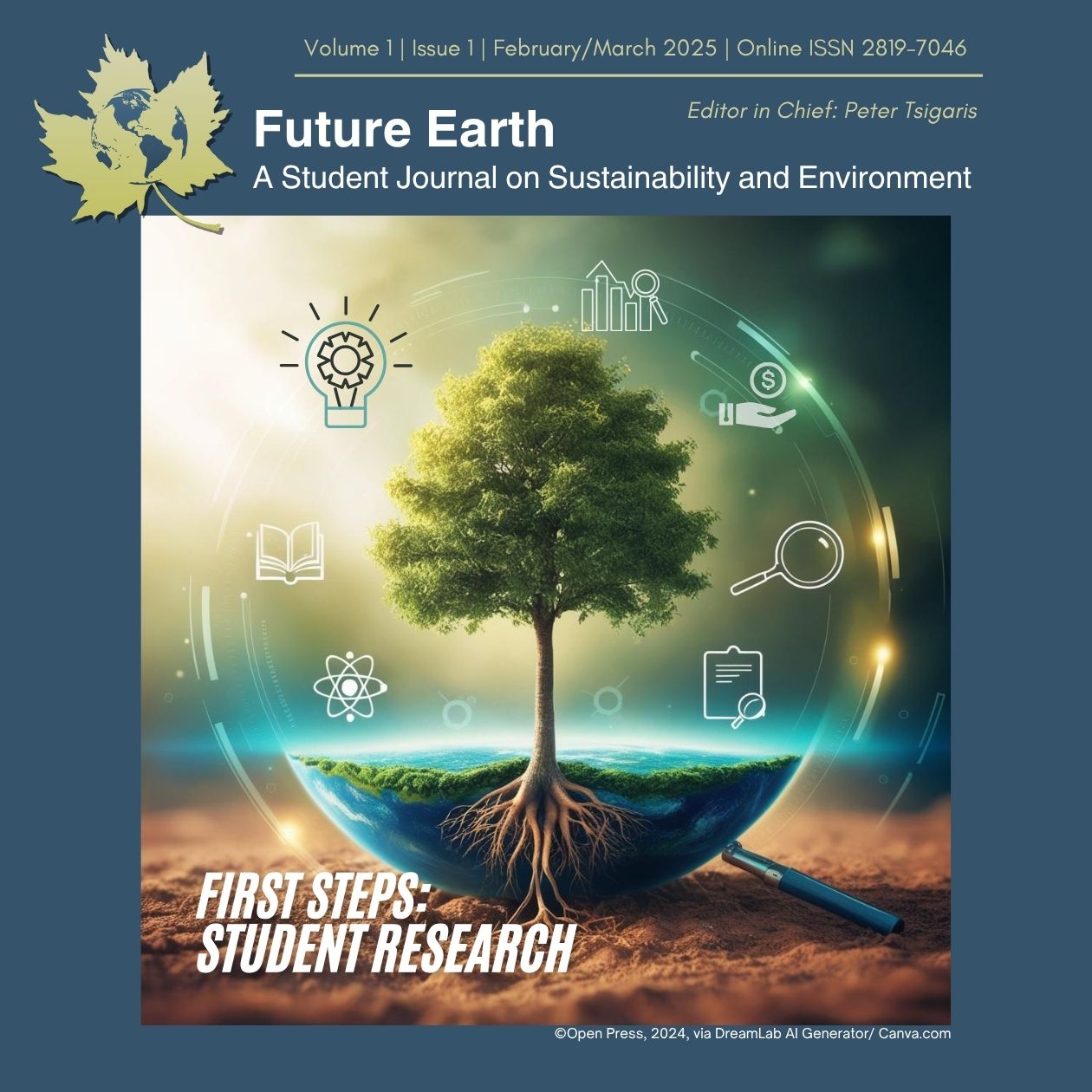A Comparative Analysis of Transportation Systems in Kamloops and Vancouver: The effects on the environment and sustainable living
DOI:
https://doi.org/10.29173/bcelnfe680Abstract
Transportation systems shape urban sustainability, health, and everyday life. This study compares Vancouver and Kamloops, B.C., to assess how infrastructure influences travel behavior and per-capita transportation emissions. Using publicly available government data, planning documents, statistical records, and prior studies, supplemented by lived experience, we analyze mode shares, transit accessibility, walkability, and emission profiles. Vancouver’s integrated network of frequent transit, protected cycling routes, and transit-oriented neighbourhoods corresponds to lower transportation emissions at 39 percent and higher active-mode use of walking and cycling at 29 percent. In Kamloops, car dependence dominates (88% of trips), and transportation contributes a larger share of emissions at 66 pc. Kamloops' fragmented walkability and topographic constraints further limit alternatives. While geographic and environmental factors preclude a simple replication of Vancouver’s model, targeted improvements in Kamloops—such as enhanced bus frequency and coverage, connected and protected cycling infrastructure, and walkable, mixed-use neighbourhood design—could deliver meaningful reductions in emissions and co-benefits for public health and social inclusion. The findings highlight that even in car-dependent mid-sized cities, incremental, context-sensitive interventions in sustainable transport can yield outsized gains.
Keywords: sustainable transport, mode share, transit accessibility, walkability, per-capita emissions, mid-sized cities
References
BC Transit. (n.d.). Transit future plan. Retrieved from https://www.bctransit.com
City of Kamloops. (2021, June). Community climate action plan [PDF]. https://www.kamloops.ca/sites/default/files/docs/cityofkamloops_communityclimateactionplan_june2021_final_0.pdf
City of Kamloops, Climate and Sustainability Division. (2022, July). Local government climate action program report [PDF]. City of Kamloops. https://www.kamloops.ca/sites/default/files/2022-08/2022%20Local%20Government%20Climate%20Action%20Program%20Report_For%20Web.pdf
City of Vancouver. (n.d.). Climate action through transportation. In Green Vancouver – Climate emergency action plan. https://vancouver.ca/green-vancouver/transportation.aspx
Government of British Columbia. (2021). Clean BC roadmap to 2030. Clean BC. https://cleanbc.gov.bc.ca
Graduate and Postdoctoral Studies, University of British Columbia. (n.d.). Climate. UBC Graduate School. https://www.grad.ubc.ca/campus-community/life-vancouver/climate
Hamer, M., & Chida, Y. (2008). Active commuting and cardiovascular risk: A meta-analytic review. Preventive Medicine, 46(1), 9 13. https://doi.org/10.1016/j.ypmed.2007.03.006
Health & Community Design Lab. (n.d.). Walkability index. University of British Columbia. https://atl.sites.olt.ubc.ca/research/walkability-index/
Holliday, K. (2024, Feb 2). Dozens of new Kamloops bus shelters to be installed through city’s multi-year plan. Castanet Kamloops. https://www.castanetkamloops.net/news/Kamloops/470301/Dozens-of-new-Kamloops-bus-shelters-to-be-installed-through-city-s-multi-year-plan
Kamloops Weather Stats. (2025). Yearly snowfall in Kamloops, British Columbia. https://kamloops.weatherstats.ca/charts/snow-yearly.html
Litman, T. (2020). Evaluating active transport benefits and costs [PDF]. Victoria Transport Policy Institute. https://www.vtpi.org/whoserd.pdf
Point2Homes. (n.d.). Vancouver demographics. https://www.point2homes.com/CA/Demographics/BC/Vancouver.html
Rissel, C., Curac, N., Greenaway, M., & Bauman, A. (2012). Physical activity associated with public transport use: A review and modelling of potential benefits. International Journal of Environmental Research and Public Health, 9(7), 2454 2478. https://doi.org/10.3390/ijerph9072454
Statista Research Department. (2022). Per capita greenhouse gas emissions in the Metro Vancouver region of Canada. Statista. https://www.statista.com/statistics/1111864/volume-of-greenhouse-gas-emissions-per-capita-in-canada-vancouver/
Statistics Canada. (2021). Census profile: Kamloops, British Columbia; Vancouver, British Columbia [Data set]. Government of Canada. https://www12.statcan.gc.ca/census-recensement/2021/dp-pd/prof/details/page.cfm?LANG=E&GENDERlist=1&STATISTIClist=1,4&DGUIDlist=2021A00055915022,2021A00055933042&HEADERlist=0
Statistics Canada. (2022). The 10 highest population densities among municipalities (census subdivisions) with 5,000 residents or more, 2021. Government of Canada. https://www150.statcan.gc.ca/n1/daily-quotidien/220209/t004a-eng.htm
topographic-map.com. (n.d.). Kamloops topographic map. Retrieved September 22, 2025, from https://en-ca.topographic-map.com/map-z8qz4/Kamloops/?center=50.70864%2C-120.28928&zoom=15
topographic-map.com. (n.d.). Vancouver topographic map. Retrieved September 22, 2025, from https://en-ca.topographic-map.com/map-gjwz4/Vancouver/?center=49.2627%2C-23.04344&zoom=11
Vancouver Economic Commission. (n.d.). Public transit: Essential for healthy, connected, and sustainable cities. https://web.archive.org/web/20240810000408/https://vancouvereconomic.com/blog/vecs_take/public-transit-essential-for-healthy-connected-and-sustainable-cities/
Vancouver Weather Stats. (2025). Yearly snowfall in Vancouver, British Columbia. https://vancouver.weatherstats.ca/charts/snow-yearly.html
Voss, C., Sims-Gould, J., Ashe, M. C., McKay, H. A., Pugh, C., & Winters, M. (2016). Public transit use and physical activity in community-dwelling older adults: Combining GPS and accelerometry to assess transportation-related physical activity. Journal of Transport & Health, 3(2), 191 199. https://doi.org/10.1016/j.jth.2016.02.011
Published
How to Cite
Issue
Section
Categories
License
Copyright (c) 2025 Future Earth: A Student Journal on Sustainability and Environment

This work is licensed under a Creative Commons Attribution-NonCommercial-ShareAlike 4.0 International License.
Authors retain copyright and grant the journal the right of first publication, with the work licensed under a Creative Commons Attribution-NonCommercial-ShareAlike (CC BY-NC-SA) License. This license allows others to share and adapt the work, provided proper attribution is given to the original author and the work's initial publication in this journal, and that it is used for non-commercial purposes under the same terms. Authors may also enter into separate, additional agreements for the non-exclusive distribution of the journal's published version of the work (e.g., posting it to an institutional repository or including it in a book), with proper acknowledgement of its original publication in this journal.
Authors are encouraged to post their work online (e.g., in institutional repositories or on their personal websites) both prior to and during the submission process, as this can foster productive exchanges and increase the visibility and citation of their work (See The Effect of Open Access).



